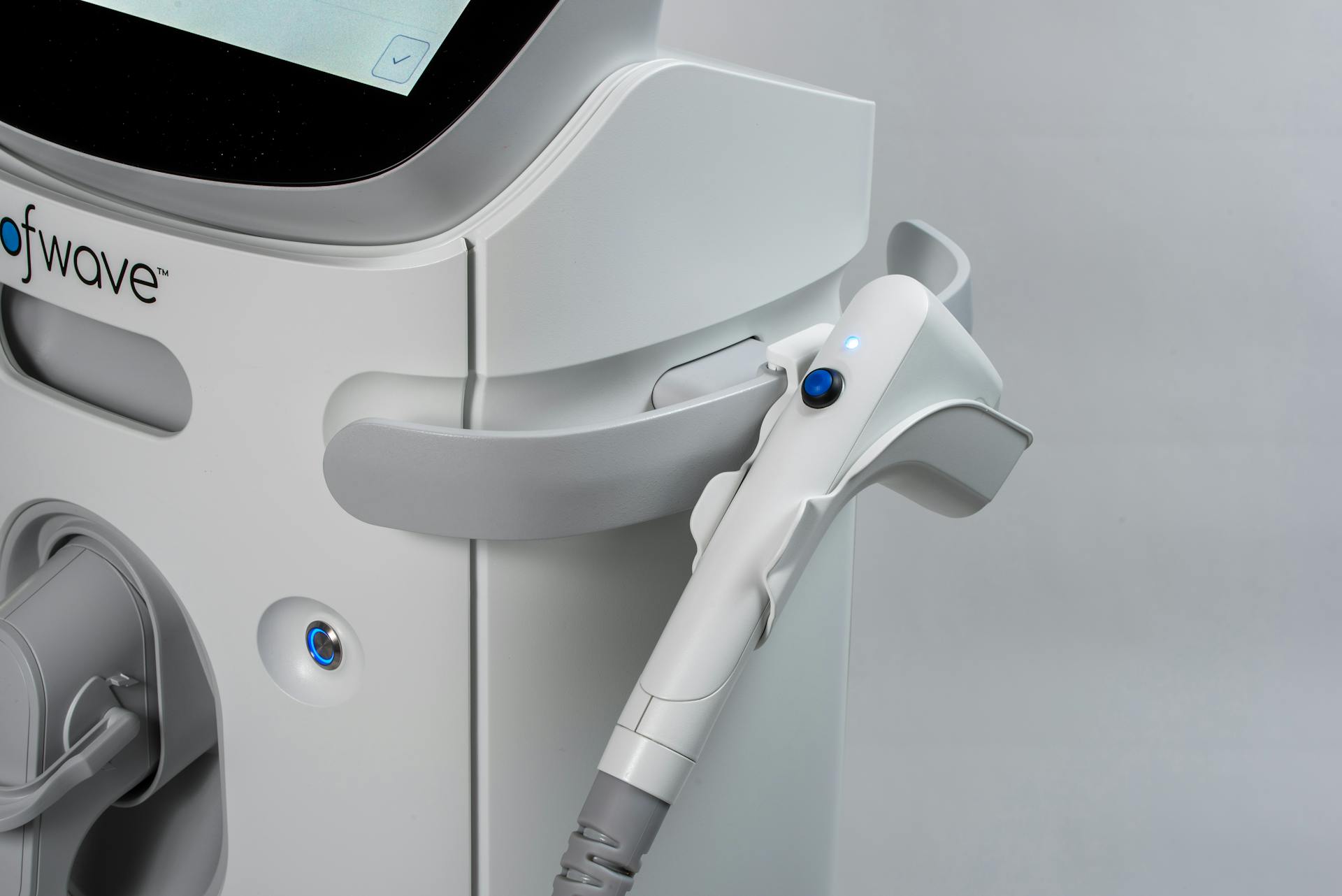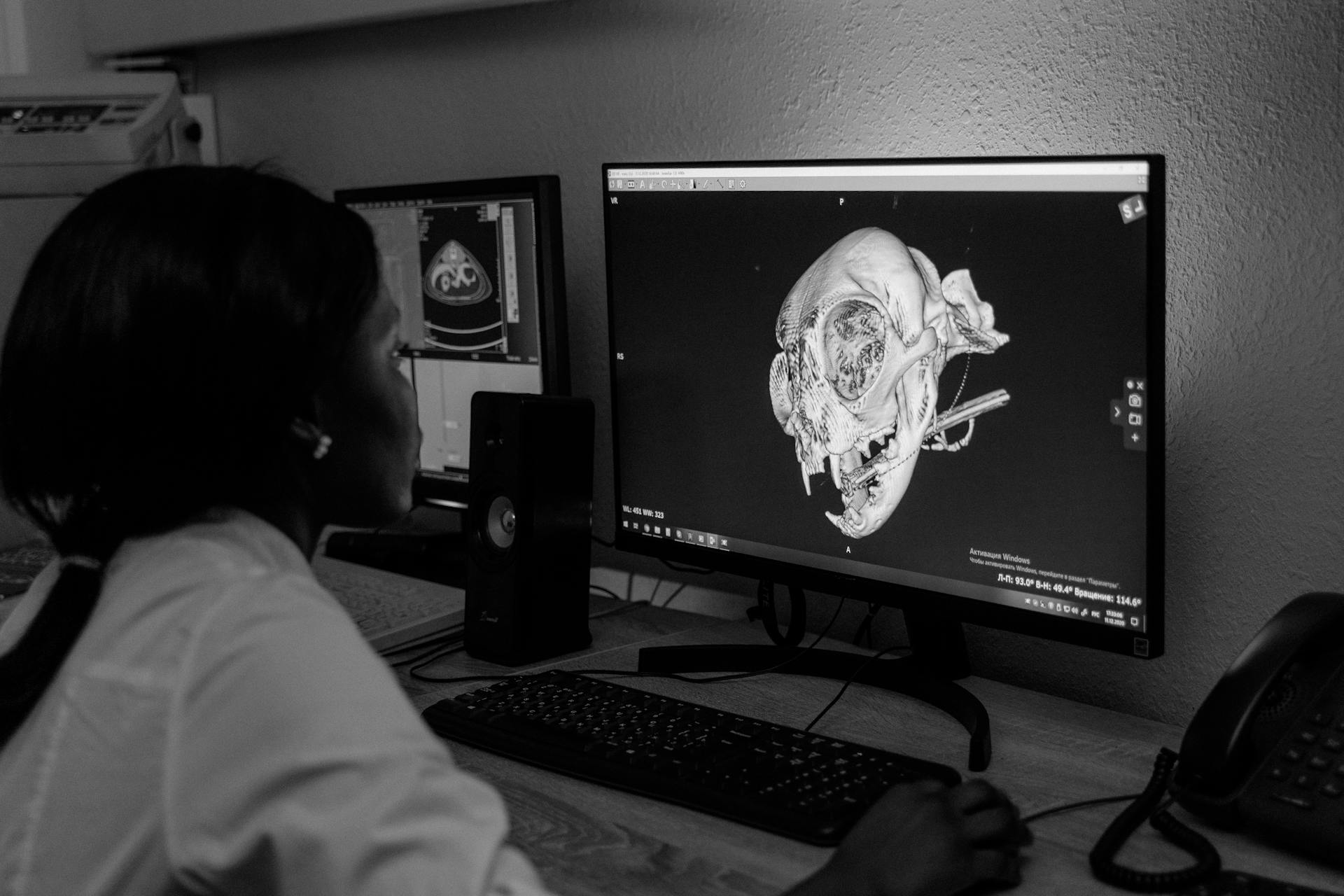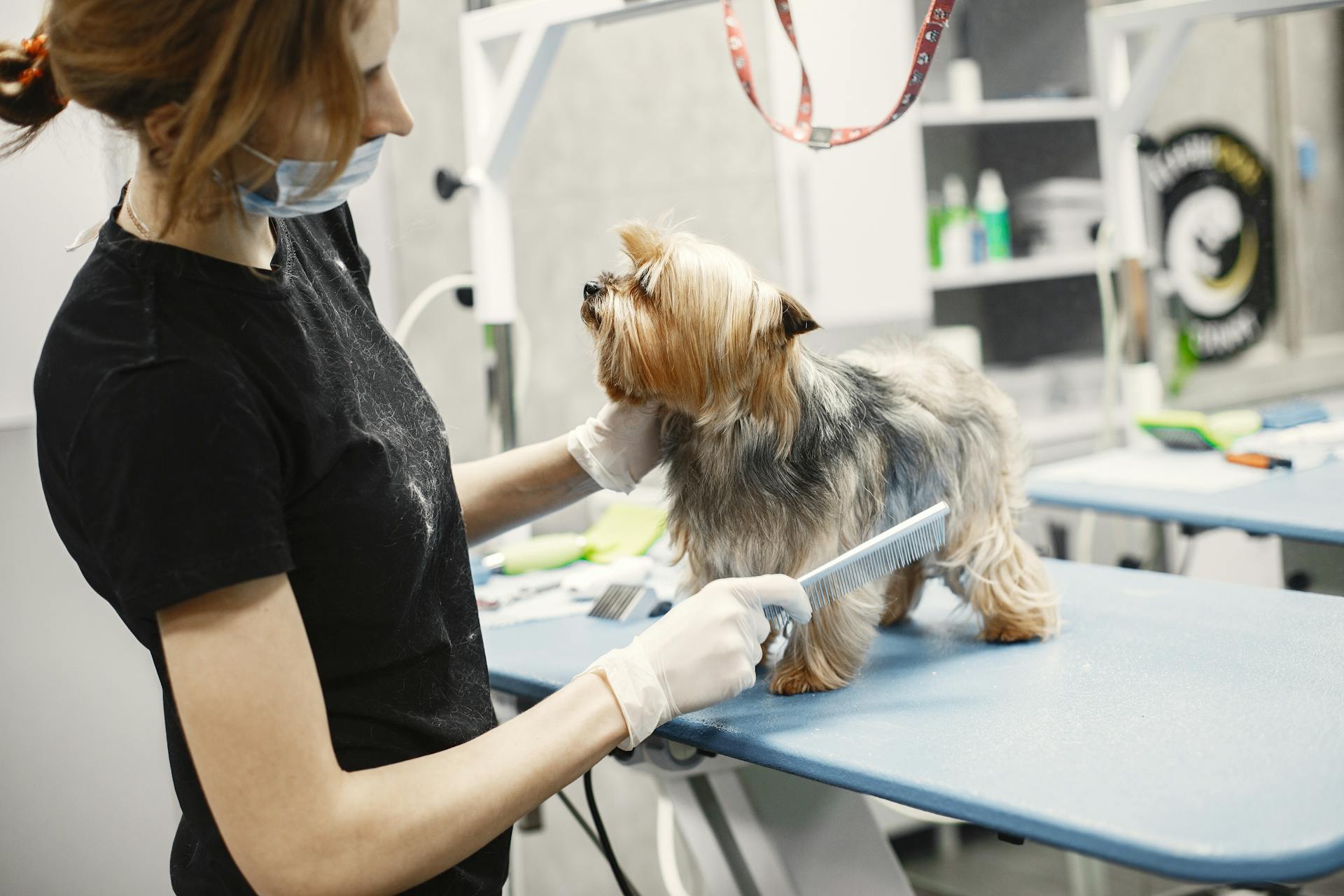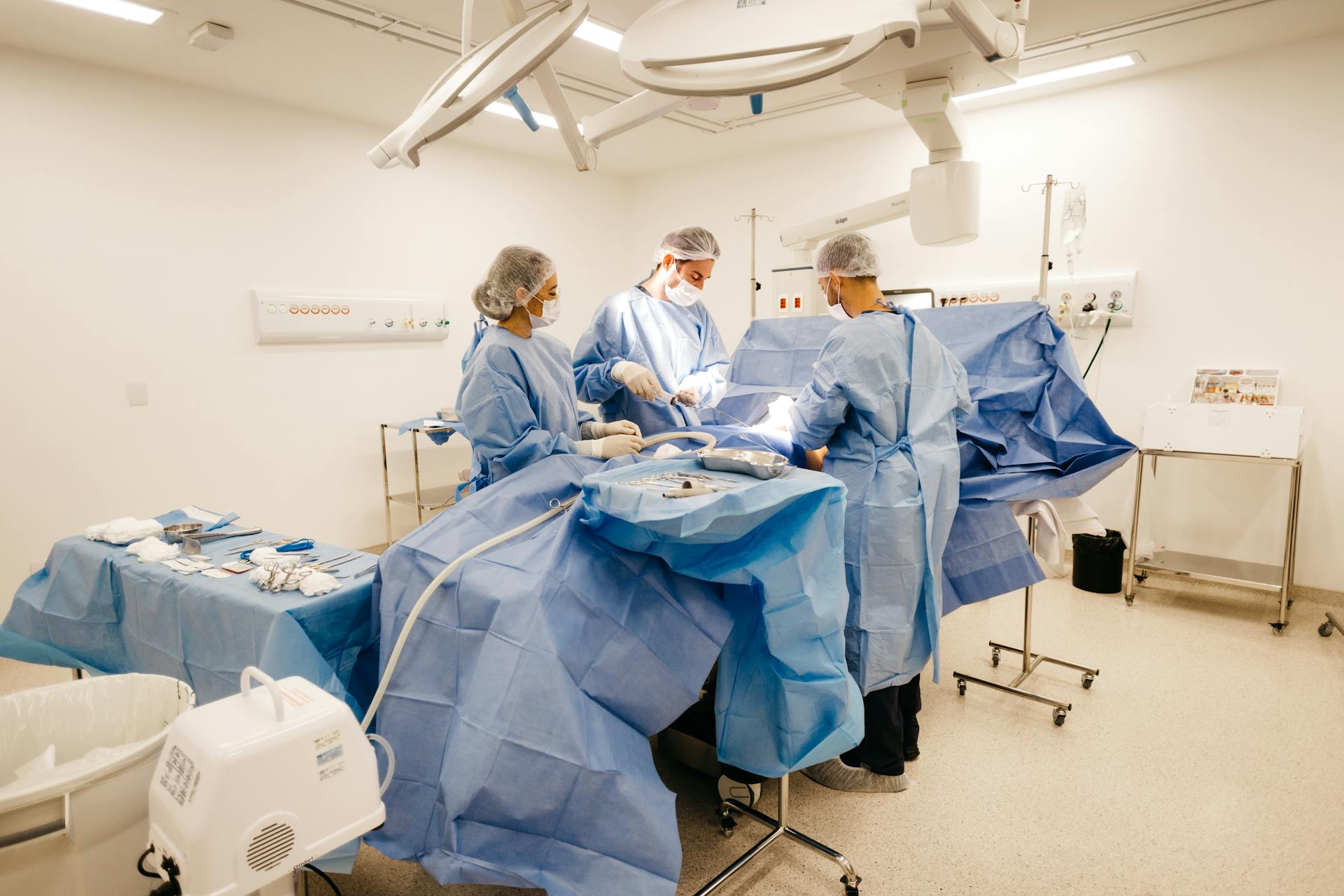
Pyometra surgery is a serious medical intervention that requires careful consideration and planning. Pyometra is a life-threatening condition that occurs when a dog's uterus becomes infected and fills with pus.
The primary goal of pyometra surgery is to remove the infected uterus to prevent further complications. This procedure is usually performed under general anesthesia to minimize stress and pain for the dog.
Pyometra surgery can be a lifesaving measure for dogs, but it's essential to understand the risks and benefits involved. The surgery can take several hours to complete, and recovery time may vary depending on the dog's age, size, and overall health.
A surgical team typically consists of a veterinarian, surgical nurse, and anesthesiologist to ensure the dog receives proper care during and after the procedure.
Causes and Symptoms
Pyometra is a serious condition that can affect female dogs, and understanding its causes and symptoms is crucial for prompt treatment.
The risk of developing pyometra varies between dog breeds, and it can occur at any age, whether the dog has bred or not. This condition is more common as the dog gets older.
Pyometra is a result of hormonal and structural changes in the uterus lining, which can happen during the eight weeks after a dog's peak standing heat has ended. Under these circumstances, bacteria can grow and cause infection.
The cervix plays a major role in the severity of pyometra. If it's open, the infected material can leave the body, making treatment easier. If it's fully closed, the uterus may rupture, causing peritonitis and possible rapid death.
Here's a summary of the two types of pyometra:
- Open pyometra: The cervix is open, allowing the infected material to leave the body.
- Closed pyometra: The cervix is fully closed, increasing the risk of uterine rupture and peritonitis.
Signs and Symptoms
Pyometra can be a challenging condition to diagnose, especially in its closed form. This is because the symptoms are often subtle and can easily be missed.
One of the most obvious signs of open pyometra is a discharge of pus from the vulva in a female dog that has recently been in heat. Fever is less common, occurring in less than a third of female dogs with pyometra.
Symptoms of both open and closed pyometra include vomiting, loss of appetite, and depression. Increased drinking and urinating are also common.
Bloodwork may show dehydration and/or an increased white blood cell count.
Readers also liked: Open Pyometra
Cause
Pyometra is a serious condition that can affect dogs, and it's essential to understand its cause. The risk of developing pyometra varies between dog breeds.
The condition is often a result of hormonal and structural changes in the uterus lining. This can happen at any age, whether the dog has bred or not, and whether it's her first or tenth heat.
As a dog ages, the risk of pyometra increases. The main risk period for a female is for eight weeks after her peak standing heat has ended.
During this time, the cervix begins to close, and the inner lining of the uterus starts to adapt back to normal. However, cystic hyperplasia of the endometrium (CEH) may occur as an inappropriate response to progesterone.
Bacteria, especially E. coli, can migrate from the vagina into the uterus and find a favorable environment for growth. Progesterone also causes mucus secretion, closes the cervix, and decreases uterine contractility.
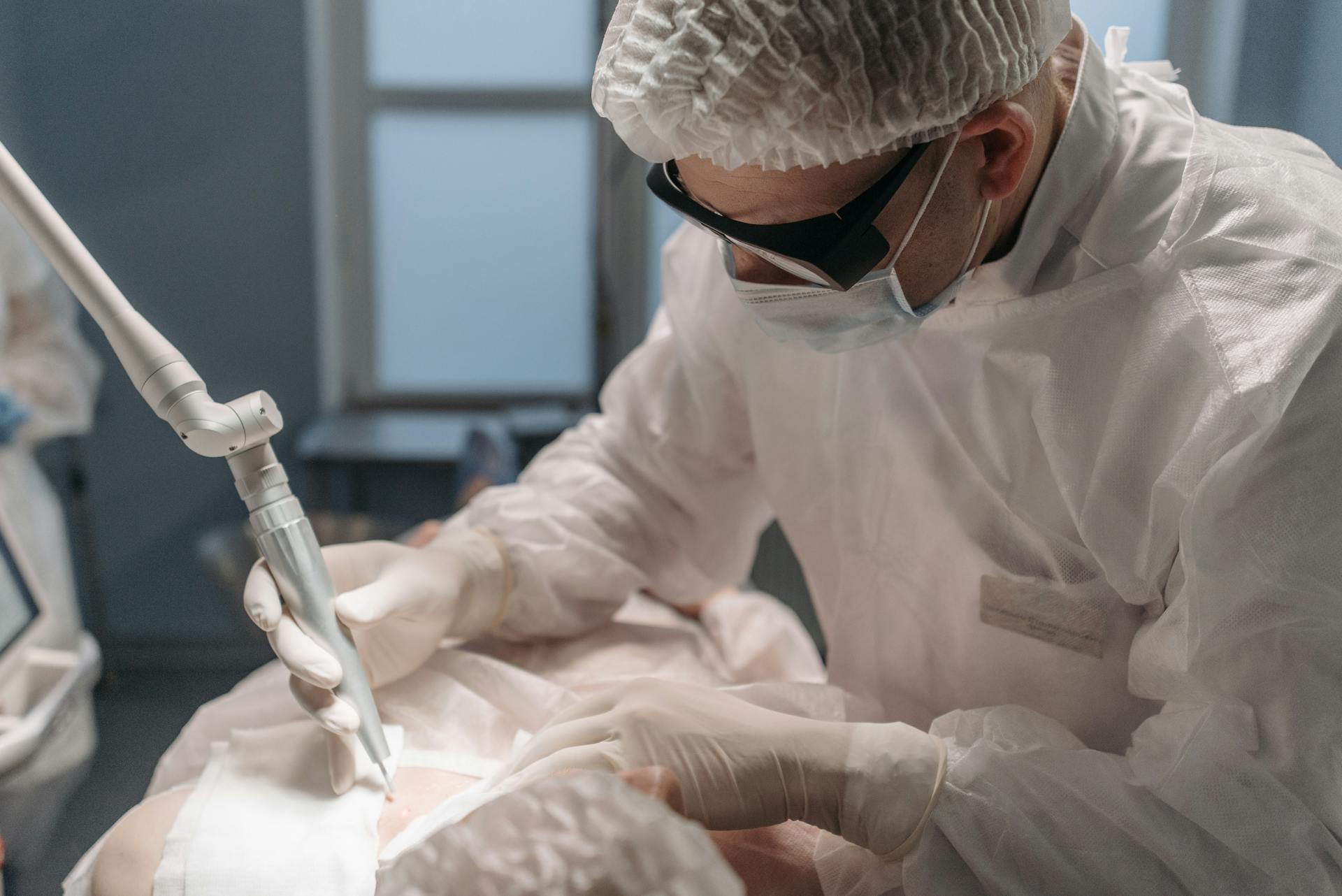
The condition of the cervix plays a significant role in the severity of pyometra. If the cervix is open, the infected material can leave the body, making treatment easier and safer. This is known as open pyometra.
If the cervix is fully closed, there is no discharge from the vulva, and the uterus may rupture, causing peritonitis and possible rapid death. This is known as closed pyometra.
Broaden your view: Closed Pyometra in Dogs Symptoms
Diagnosis and Treatment
Diagnosis of pyometra typically involves a veterinarian's physical exam, an x-ray or ultrasound of the uterus, and bloodwork to confirm the diagnosis.
Your veterinarian will likely use a combination of these methods to determine the best course of treatment for your pet.
Pyometra requires immediate treatment to prevent sepsis and death, so quick action is crucial.
Stabilizing your pet with IV fluids and medications is often necessary before any further treatment can be done.
Surgical removal of the uterus and ovaries is usually the recommended treatment option, as it has a high cure rate and prevents pyometra from occurring again.
See what others are reading: Pet Care & Surgery Center
In livestock, the treatment of choice for minor cases is dinoprost tremethamine, also known as Lutalyse.
Supportive antibiotic treatment may also be recommended in some cases.
Emergency spay surgery is typically the treatment of choice for female dogs after they've been stabilized.
Preoperative tests, such as blood work and X-rays, are usually necessary to diagnose pyometra and determine the best course of treatment.
The specific preoperative tests required will depend on the overall health of your pet and the severity of the pyometra.
Check this out: Treating Pyometra without Surgery
Surgery Overview
Pyometra surgery involves the removal of the infected uterus, ovaries, and surrounding organs. The surgery is similar to a spay surgery but requires more care due to the inflamed and brittle uterus.
The clinical team will anesthetize and intubate the pet, and vital signs will be monitored throughout the pre-operative, operative, and post-operative care. A veterinary technician with surgical monitoring expertise will oversee the process.
The surgery involves making an incision in the abdomen, inspecting the affected and surrounding organs, and removing the ovaries and uterus. The area is then flushed thoroughly, and the inner and outer layers of the abdomen are sutured closed.
You might like: Taking Care of a Dog after Bloat Surgery
Pets typically stay in the hospital for up to 48 hours for pain management and monitoring after surgery. Owners must keep their pets quiet and comfortable at home, following the aftercare instructions provided by the hospital.
The surgery removes both ovaries, the uterine horns, and the body of the uterus, eliminating the infection. This operation is commonly referred to as a "Pyo" by veterinary staff.
A pyometra operation is typically done under general anesthesia, with the pet lying on her back on a surgical table. The hair is clipped and the skin is scrubbed with surgical soap to disinfect the area.
The surgery involves ligating the major blood vessels supplying the ovaries and uterus, and then removing the infected organs. Extreme care is taken to prevent rupture of the pus-filled uterus, which could lead to contamination of the abdomen.
The surgery involves closing the uterus above the cervix with dissolvable sutures and closing the abdominal incision with one or two layers of self-dissolving sutures. The outer layer of skin is closed with sutures or surgical staples, which need to be removed in about 10 to 14 days.
Frequently Asked Questions
Why is pyometra surgery so expensive?
Pyometra surgery is costly due to its complexity and the higher risks involved with older, fragile dogs. The procedure requires more time, expertise, and caution to ensure a successful outcome.
How successful is pyometra surgery in dogs?
Surgical management of pyometra in dogs is highly effective, with a 100% success rate when done promptly. However, immediate surgery is crucial for optimal outcomes
What to expect after pyometra surgery in cats?
After pyometra surgery, limit your cat's activity for 2 weeks to allow complete healing, and provide a safe, crate-free space for rest and recovery
How much does pyometra surgery cost for cats?
Pyometra surgery for cats typically costs around $750, with a range of $450 to $1000. If you're concerned about your cat's health, learn more about the causes, symptoms, and treatment options for pyometra.
What percentage of unspayed dogs get pyometra?
About 20% of intact female dogs may develop pyometra by age 10, making spaying a crucial preventive measure
Featured Images: pexels.com
